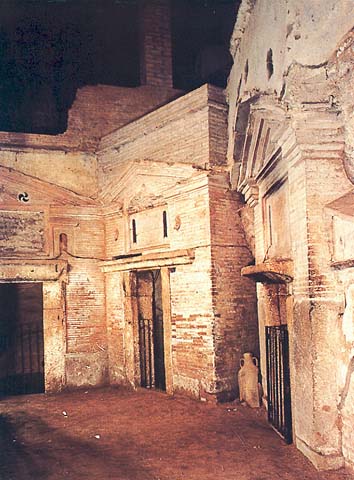Image Details

Pontifical Commission of Sacred Archaeology
Three pagan mausoleums were found under the church of St. Sebastian on the Via Appia Antica. The burial chambers were cut down into the tufa rock and then masonry facades were constructed and covered with stucco. Only the tomb on the right still has the inscription over the doorway, identifying its owner as M. Clodius Hermes. The middle tomb contains four graves of men who belonged to the association of the Innocentiores, probably not a Christian club in spite of their name “Innocents.” The third tomb is named after the axe symbol found in stucco relief over the door. The tombs were built in the first half of the second century A.D., and were filled in by the Christians about 258 A.D. when they built on the site the Memorial to Saints Peter and Paul. The brick pier in the background is a modern addition, as are the iron gates on the tombs. The mausoleum chambers are decorated with stucco reliefs and paintings. Arcosolia for inhumations as well as urns for cremation remains were found in these hypogea (burial rooms). In the middle tomb the Greek letters ICQU‚ were scratched into the fresh plaster with a cross in the shape of a T inscribed between the letters. These are certainly the work of a Christian. The large jars which originally held water necessary for ritual washings, were used to block the doorways when the tombs were filled in with earth by the Christians.
